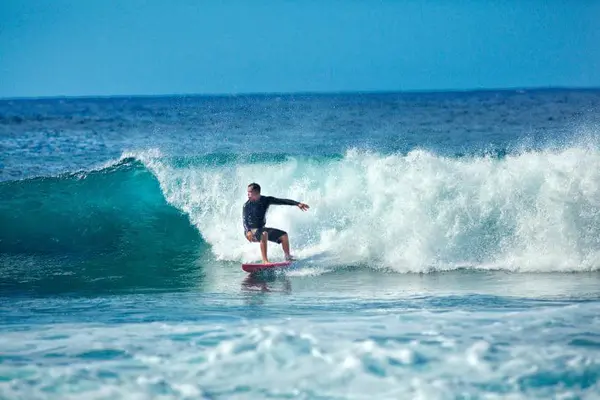SUP stands for Stand Up Paddleboarding, which is a variant of surfing that has become increasingly popular in recent years. Instead of using their hands to paddle while lying on their stomachs like traditional surfers, SUP riders use a long paddle to propel themselves through the water while standing on a larger, more stable board. This allows them to explore calm waters, navigate through flats and shallows, and even catch waves in the ocean.
Stand-Up Paddleboarding, or SUP, has gained popularity worldwide. It is accessible to people of all ages and skill levels. The sport offers both a fun and challenging way to explore the water. This article explores the history, equipment, techniques, benefits, and competitive aspects of SUP.
The History of SUP
Ancient Roots
SUP has ancient origins. The practice of using a paddle while standing on a board can be traced back to Africa, South America, and Polynesia. Fishermen and hunters used this method to navigate through rivers and oceans.
Modern Revival
In the 20th century, surfing became more popular in Hawaii. Surfers began to use paddles to navigate waves more efficiently. This technique allowed them to see approaching swells and interact with students during surf lessons.
Global Spread
The sport spread from Hawaii to the rest of the world in the early 2000s. Influential surfers and watermen like Laird Hamilton and Dave Kalama promoted SUP. They showcased its versatility and fun aspects, leading to a surge in popularity.
SUP Equipment
The SUP Board
SUP boards are larger and more stable than traditional surfboards. They range in size from 9 to 14 feet. The length and width of the board affect stability and maneuverability. Beginners usually start with wider boards for better balance.
The Paddle
The paddle is a crucial part of SUP. It is usually made of lightweight materials like carbon fiber, fiberglass, or aluminum. The paddle length varies based on the paddler’s height and the type of paddling. It typically has a T-shaped handle for a comfortable grip.
Safety Gear
Safety gear is essential for SUP. This includes a personal flotation device (PFD), leash, and proper attire. PFDs are mandatory in many areas. A leash attaches the paddler to the board, preventing it from drifting away. Wetsuits or rash guards provide protection and comfort.
Techniques and Skills
Basic Stance
The basic stance involves standing in the center of the board with feet parallel and shoulder-width apart. Knees should be slightly bent. This position helps maintain balance and control.
Paddling Techniques
Proper paddling technique is key to efficient movement. The stroke begins with the paddle blade fully submerged. The paddler pulls the blade through the water in a straight line, keeping the bottom arm straight and top arm bent. Rotation of the torso adds power to the stroke.
Turning
Turning on a SUP involves several techniques. The sweep stroke is a common method. The paddler makes a wide arc with the paddle to turn the board. Another technique is the pivot turn, where the paddler shifts weight to the back of the board and uses quick strokes to rotate.
See Also: Does Knowing How to Skateboard Help with Surfing
Benefits of SUP
Physical Fitness
SUP provides a full-body workout. It strengthens the core, legs, arms, and back. Paddling builds endurance and cardiovascular fitness. Balance and stability are also improved.
Mental Health
Being on the water has calming effects. SUP reduces stress and promotes relaxation. It offers a way to connect with nature and enjoy the outdoors.
Accessibility
SUP is accessible to a wide range of people. It does not require waves, making it possible to paddle on lakes, rivers, and oceans. Beginners can learn the basics quickly and enjoy the sport.
Competitive SUP
Racing
SUP racing is a popular competitive aspect. Races vary in distance, from sprints to long-distance events. Participants compete in different categories based on board size and skill level.
SUP Surfing
SUP surfing combines traditional surfing with paddleboarding. Surfers use the paddle to catch and ride waves. This adds a unique element to the sport and requires advanced skills.
SUP Yoga
SUP yoga involves practicing yoga on a paddleboard. It enhances balance and flexibility. Classes are often held on calm waters, providing a serene environment for yoga practice.
Environmental Considerations
Protecting Waterways
SUP enthusiasts have a responsibility to protect waterways. This includes avoiding pollution and respecting wildlife. Many paddlers participate in clean-up efforts to preserve natural habitats.
Sustainable Practices
Using eco-friendly equipment and supporting sustainable brands are ways to reduce environmental impact. Paddlers should also be mindful of their actions on the water to minimize harm.
Conclusion
SUP stands for Stand-Up Paddleboarding. It is a versatile and enjoyable sport that combines elements of surfing and paddling. With roots in ancient practices and a modern revival, SUP has become popular worldwide. It offers numerous physical and mental benefits and is accessible to many people. Whether for leisure or competition, SUP provides a unique way to explore and enjoy the water.

